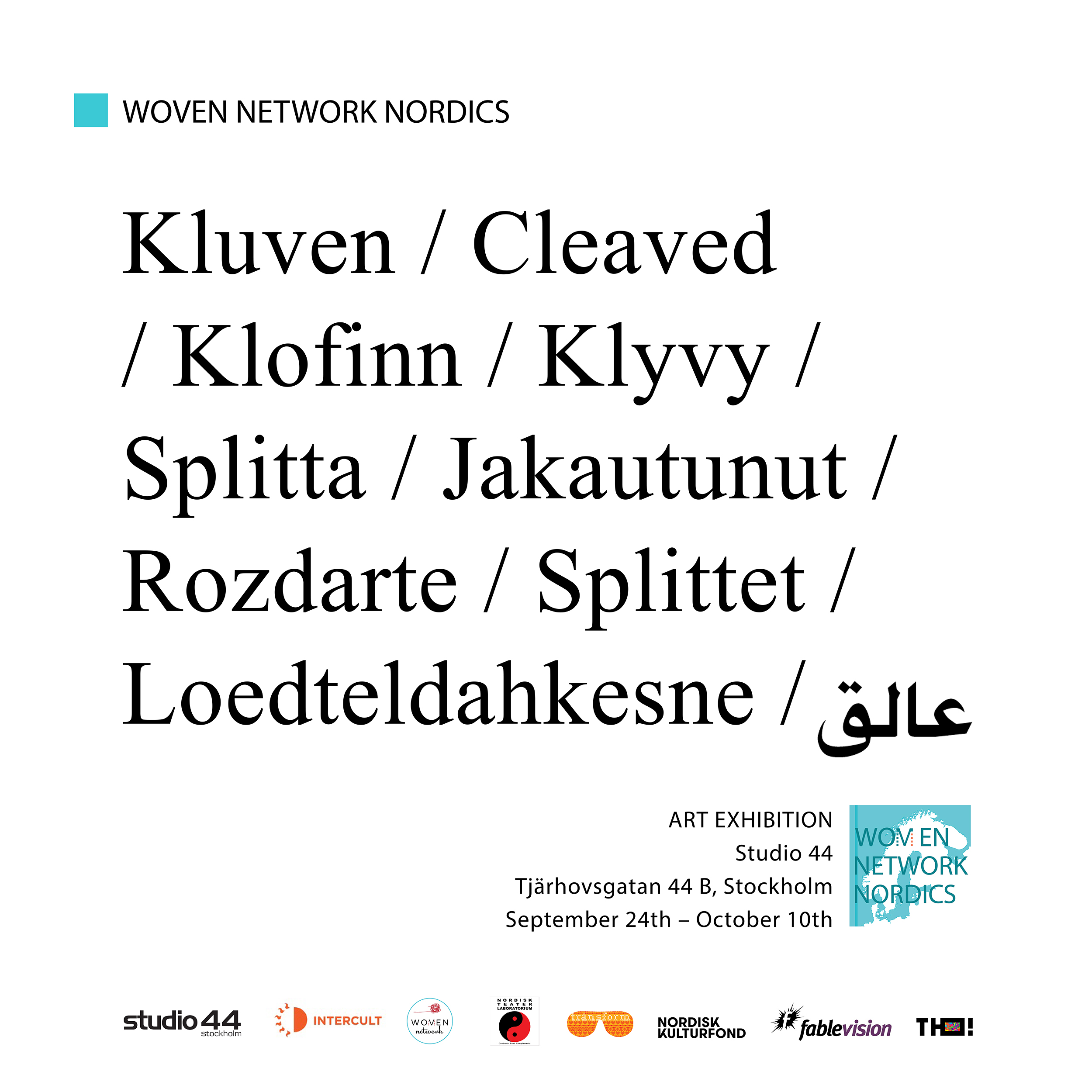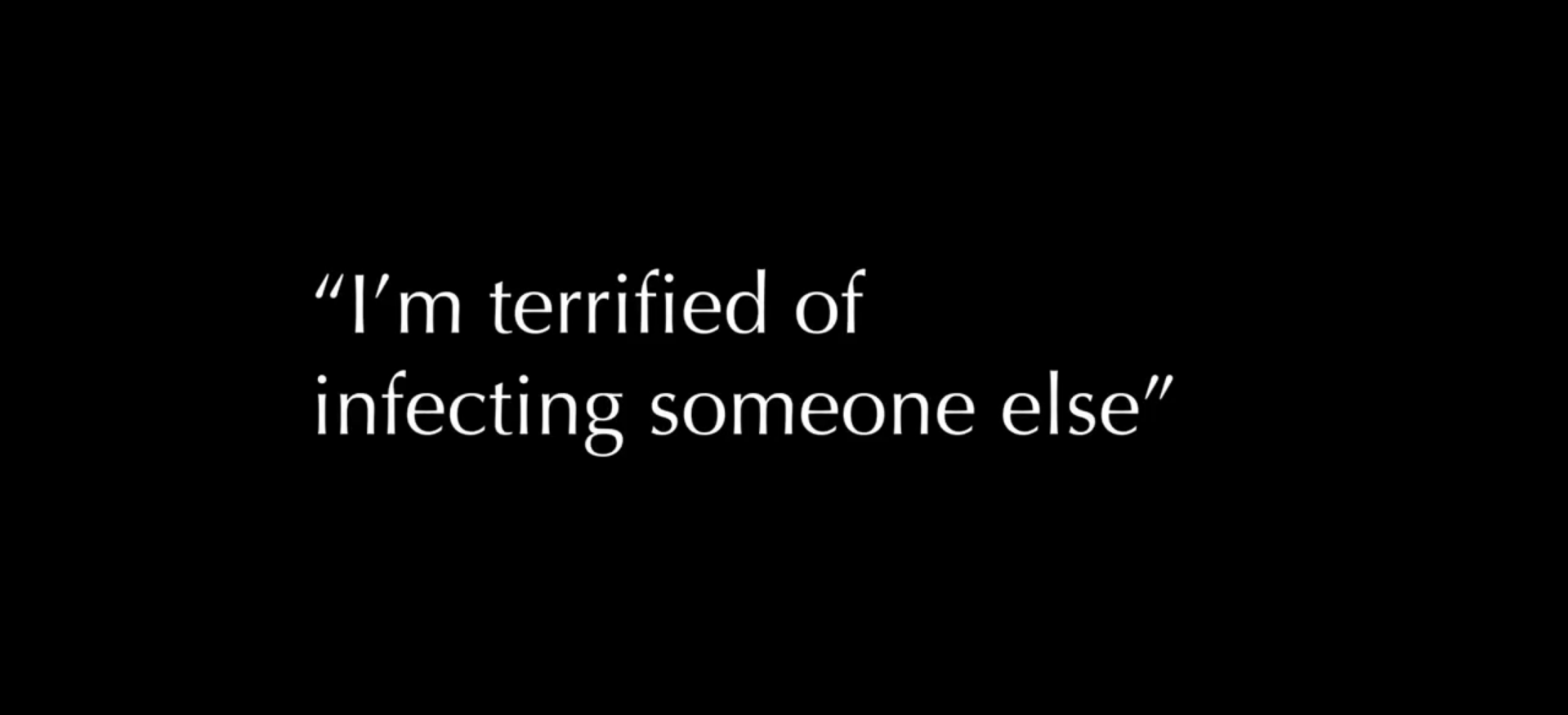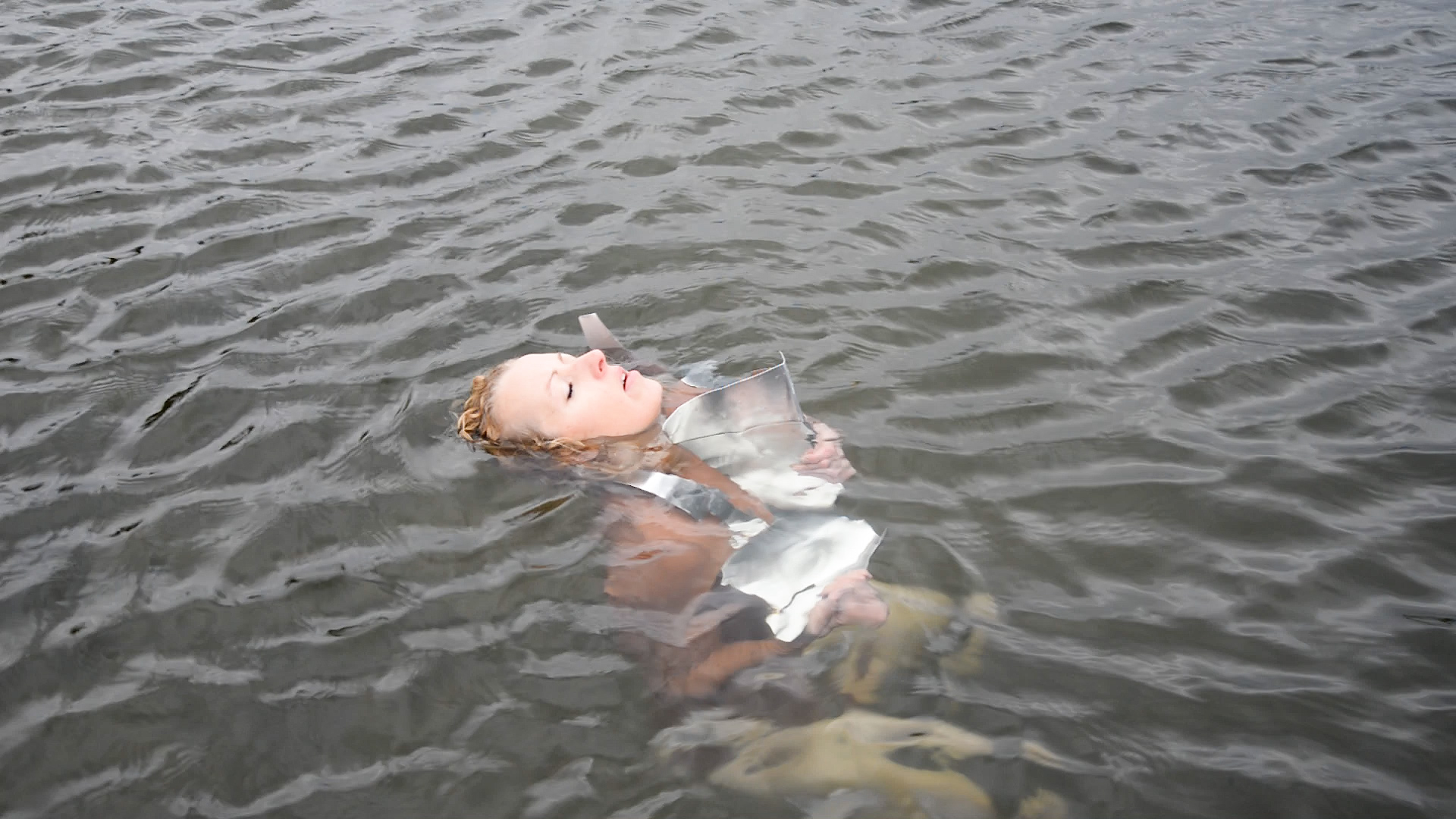‘Kluven’
24 September–10 October
Exhibition by Dina Abu Hamdan, Brynhild Bye-Tiller, Emma Hirsk, Katarzyna Piórek
Address: Studio 44, Tjärhovsgatan 44, 116 28 Stockholm
Vernissage: Friday 24 September 17–22
Artist talk: Thursday 30 September 17.00
Artist talk: Thursday 30 September 17.00
Opening hours:
25 September–10 October
Thursday–Friday 12–18
Saturday–Sunday 12–17
25 September–10 October
Thursday–Friday 12–18
Saturday–Sunday 12–17
Exhibition by four artists Brynhild Bye-Tiller (NO), Dina Abu Hamdan (DK/JO), Emma Hirsk (SE/IE), and Katarzyna Piórek (SE/PL) as a part of the project Woven Network Nordics. Managed by Intercult and in collaboration with Studio44.
Across a broad spectrum of rich and diverse creative practices, subject expertise, and cultural heritage, all four of the Woven Network Nordic artists explore and showcase the potentialities of interdisciplinary, inclusive and socially engaged artistic and digital practices, creating a safe space of support, solidarity and collaboration for female artist across Europe.
Brynhild Bye-Tiller: The Kintsugi project
The Kintsugi Project (2021) began in Norway during the COVID-19 pandemic, when a group of women came together to discuss, investigate and share experiences of being ‘Next of Kin’. They asked themselves what does it mean to be next of kin, and what happens if for some reason you are not able to be the next of kin? The project began with a mobile photography workshop, which became the basis for further research and exhibitions. The group were asked to use their voice through photography. To tell a story about being next of kin through the camera lens. And they did, to share personal stories from their lives. The first iteration of The Kintsugi Project was exhibited in Trondheim in summer 2021, with a secondary exhibition at Studio 44 in Stockholm.
The Kintsugi Project is based on Brynhild Bye-Tiller’s socially-engaged, photographic art practice, which continually explores the tensions between participation and documentary photography. Bye-Tiller’s work examines authorship, authenticity, method, usability and structure, and corresponding concerns about what kind of elements exist and how to use them in art.
Dina Abu Hamdan: The HUG
The choreography movement choir ‘HUG’, is based on the need to reconstruct and recreate our daily routines, our connections to each other and the spaces we live in.
A large crowd of children, youth, municipality and local organizations’ employees come together in their own soundscape bubble, yet collectively feel each other’s movement in an open public space. Being split between the individual and the collective need, reflecting on the fear of a crowd in a pandemic and the need of the human collective encounter.
The public is invited to experience the HUG silently or following the music, visually live or online.
The project is produced by the municipality of Ringkøbing Skjern in West Jutland – Denmark with the support of the Danish Kunstfond as part of 100 days of culture and sport. The HUG is a touring project that aims to visit many cities and bring citizens together.
Choreography: Dina Abu Hamdan
Music: Basil Hogios
Music: Basil Hogios
Emma Hirsk: The Grief Cartographies
The Grief Cartographies project, considers the acute intimacies of both private and collective loss, trauma and grief, within the context of a global Covid pandemic.
As an artist-researcher from Northern Ireland, based in Sweden, this project is borne from the deeply private loss of my mother earlier this year, and contextualised against the backdrop of pandemic restrictions across travel, borders, contact, care, family, illness and death.
As an artist-researcher from Northern Ireland, based in Sweden, this project is borne from the deeply private loss of my mother earlier this year, and contextualised against the backdrop of pandemic restrictions across travel, borders, contact, care, family, illness and death.
Incorporating the series ‘One Hundred Sculptures for my Mother’ this residency research maps a path of grief cloven by time, touch, distance, identities, memories, geographies, and covid restrictions, and presents photographs, films, drawings/writings, maps, and socio-spatial practices as a way through grief, and to somehow keep a connection to, and remembrance of my mother.
Katarzyna Piórek
The Kluven project has been constructed from a series of interviews with emigrant women who were forced or chose to move from their land to another country, and arrived in new life situations with unfamiliar social codes, cultural references and political heritages.
Through this collection of interviews, I correlate personal experiences within a broader spectrum of emotional conflicts, compromises, struggles of balancing between two worlds, crossing borders and beginning anew in an unknown country, to highlight the global fate of immigrants. Within this documentary project I also want to focus on the invisible problem, and illustrate the burdens of the human condition. I investigate immigrants’ identity through my own perspective, trying to find a merger for the stories together.
How do people deal with challenges and name the daily dilemmas? How do they feel in the corona pandemic context? For many people living abroad in their native countries, the coronavirus crisis showed how important the possibility of travelling or, at least, having an option of travel to their previous homes. Ultimately the project is going to be presented as a documentary-animation film.
Woven Network Nordics is a European project that highlights voices of women within urban spaces across three Nordic countries and examines women’s experience as central to the European response to the COVID-19 pandemic. Over the course of nine months four artists from Sweden, Denmark and Norway take part in a dynamic online residency to deliver presentations, conversations and develop a digital exhibition.
Woven Network Nordics is managed by Intercult and funded by the Nordic Culture Fund.
Partners:
Transform World Festival (NO)
Nordisk Teaterlaboratorium (DK)
Платформа ТЮ (UA)
Fablevision studios (UK)
Transform World Festival (NO)
Nordisk Teaterlaboratorium (DK)
Платформа ТЮ (UA)
Fablevision studios (UK)
For more information about Woven Network Nordics and the event contact the project manager Alice Máselníková at alice@intercult.se/+ 46 728 492 989.


